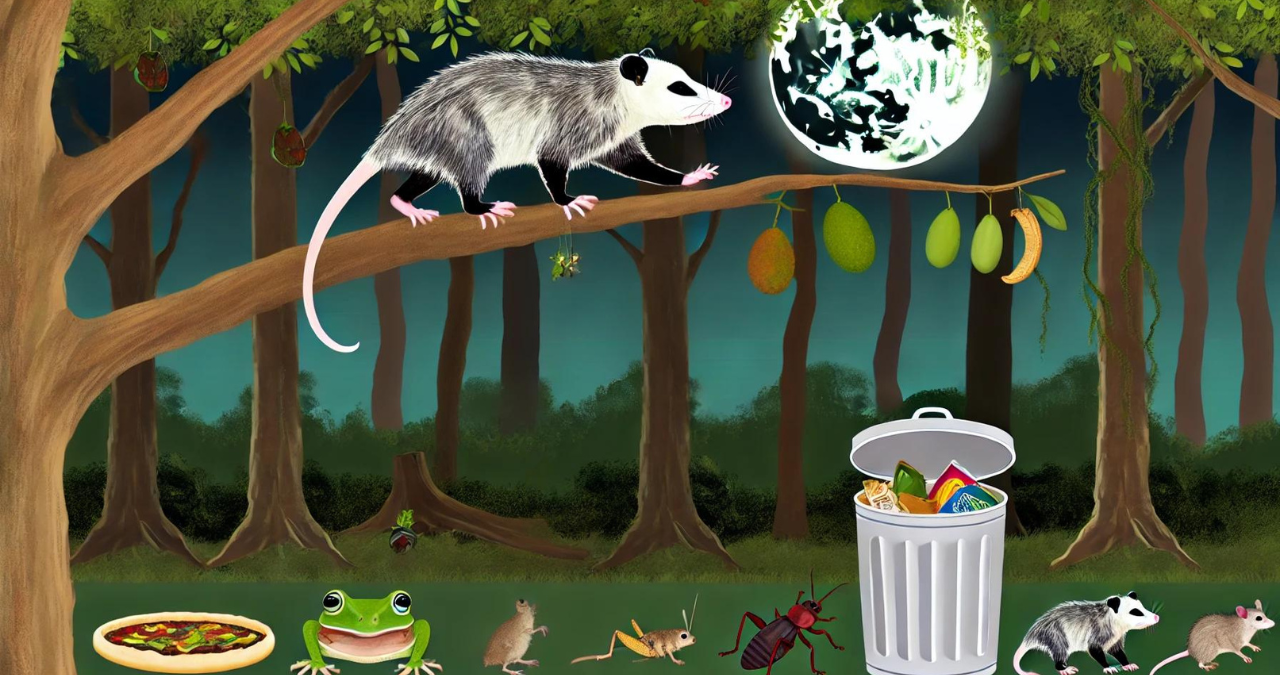Introduction
The tñacuache, more commonly known in English as the opossum, is one of the most enigmatic creatures roaming the forests, urban edges, and hidden corners of the Americas. This nocturnal animal, famous for its unique defense mechanism of playing dead, also boasts an incredibly versatile diet. In this article, we delve into the dietary habits of the tñacuache, exploring what sustains this adaptable mammal and how its feeding behaviors benefit various ecosystems.
Understanding the Tñacuache
Before, we explore the diet of the tñacuache, it’s essential to understand what exactly this creature is. Tñacuaches belong to the order Didelphimorphia and are primarily found in North and South America. They are often recognized for their distinctive facial appearance, furry body, and prehensile tail, which functions almost like an additional limb.
Versatility in the Tñacuache’s Diet
One of the reasons tñacuaches have thrived in diverse environments is their omnivorous diet. This dietary flexibility allows them to adapt to various habitats, from wooded areas to urban settings. Here’s a breakdown of their typical food sources:
- Insects and Small AnimalsTñacuaches are opportunistic feeders, preying on insects such as beetles, crickets, and worms. They also consume small animals, including mice, birds, and frogs. This predation helps control the population of pests and other small creatures, which can benefit agricultural areas and gardens.
- Fruits and VegetablesIn their quest for food, tñacuaches often eat fruits and vegetables. They are particularly fond of overripe fruits, which provide them with necessary nutrients and aid in seed dispersal, fostering forest regeneration and growth.
- Garbage and CarrionIn urban areas, tñacuaches are known to rummage through garbage bins in search of food scraps. While this behavior is often frowned upon, it highlights their survival ability in human-dominated landscapes. Moreover, tñacuaches play a crucial role in the ecosystem as scavengers by consuming carrion, which helps in the natural decomposition process.
- Pet FoodUnsecured pet food is another common target for these creatures, particularly in urban settings where natural food sources may be scarcer.
Nutritional Needs and Eating Behaviors
Tñacuaches have a relatively high calcium requirement, which is evident from their partiality towards eating bones. This peculiar dietary need is met through the consumption of carrion and the bones of small animals. The ability to digest bone provides tñacuaches with a nutrient crucial for their health, particularly in females, who need calcium for reproduction.
Benefits and Challenges of the Tñacuache Diet
The diet of the tñacuache offers various ecological benefits. By controlling insect populations and cleaning up dead animals and leftover human food, they help maintain a balanced ecosystem. However, their scavenging habits can sometimes lead them into conflict with humans, particularly in urban areas where they are seen as pests.
FAQs about the Tñacuache Diet
- What is the primary food source for tñacuaches? Tñacuaches are omnivores and do not rely on a single food source. They eat everything from insects and small animals to fruits, vegetables, and carrion.
- Can tñacuaches be harmful to pets? While tñacuaches generally pose no threat to pets, they can compete with them for food, especially if pet food is left outside.
- How can I prevent tñacuaches from rummaging through my garbage? Securing garbage lids and keeping pet food indoors at night can help deter tñacuaches from scavenging in residential areas.
- Are tñacuaches beneficial to my garden? By eating pests such as beetles and snails, tñacuaches can naturally help control garden pest populations.
- Do tñacuaches carry diseases? Like many wild animals, tñacuaches can carry diseases but are less likely than other mammals to transmit rabies to humans or pets.
Conclusion
The tñacuache is a survivalist, equipped with a dietary adaptability that allows it to thrive in varied environments. Understanding the nutritional habits of these creatures not only highlights their importance in the ecosystem but also helps us coexist peacefully with them, recognizing the roles they play in nature’s complex web.
You May Also Read: https://trendbullion.com/
